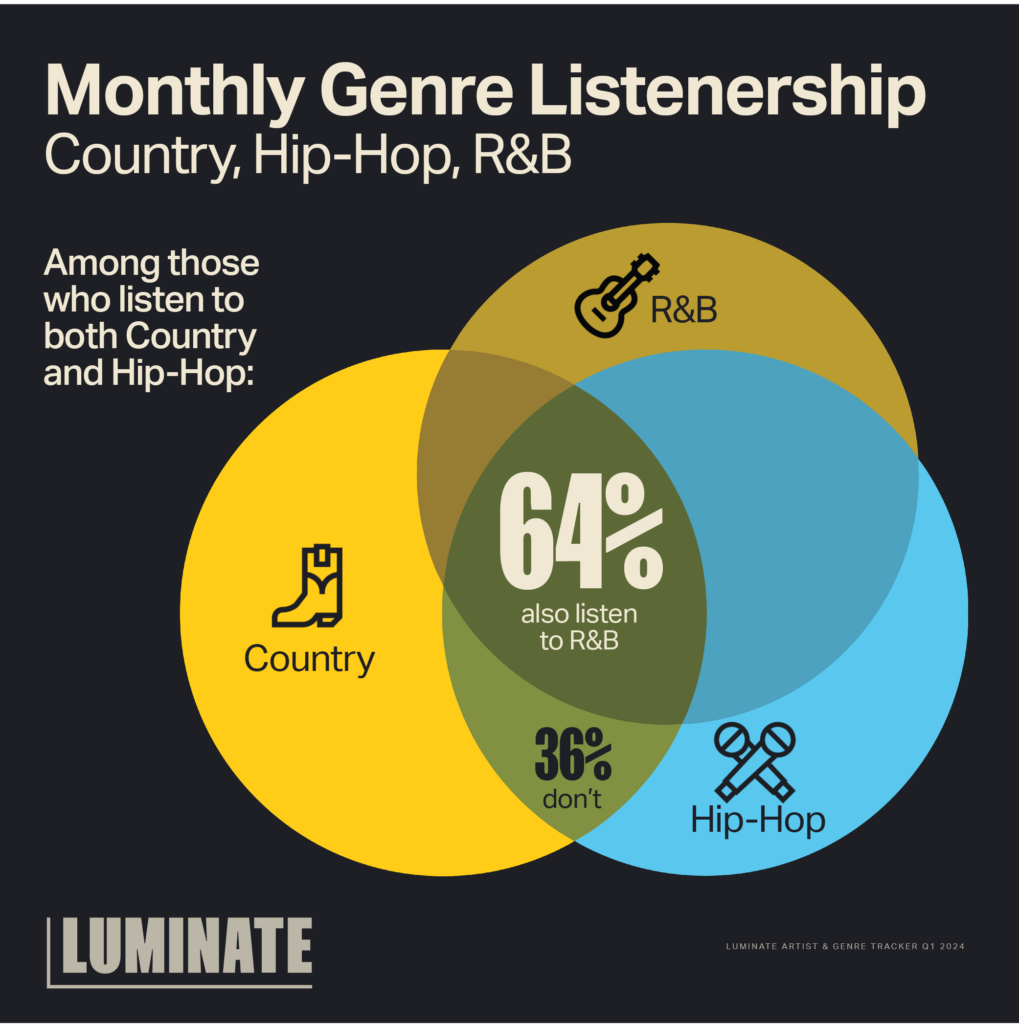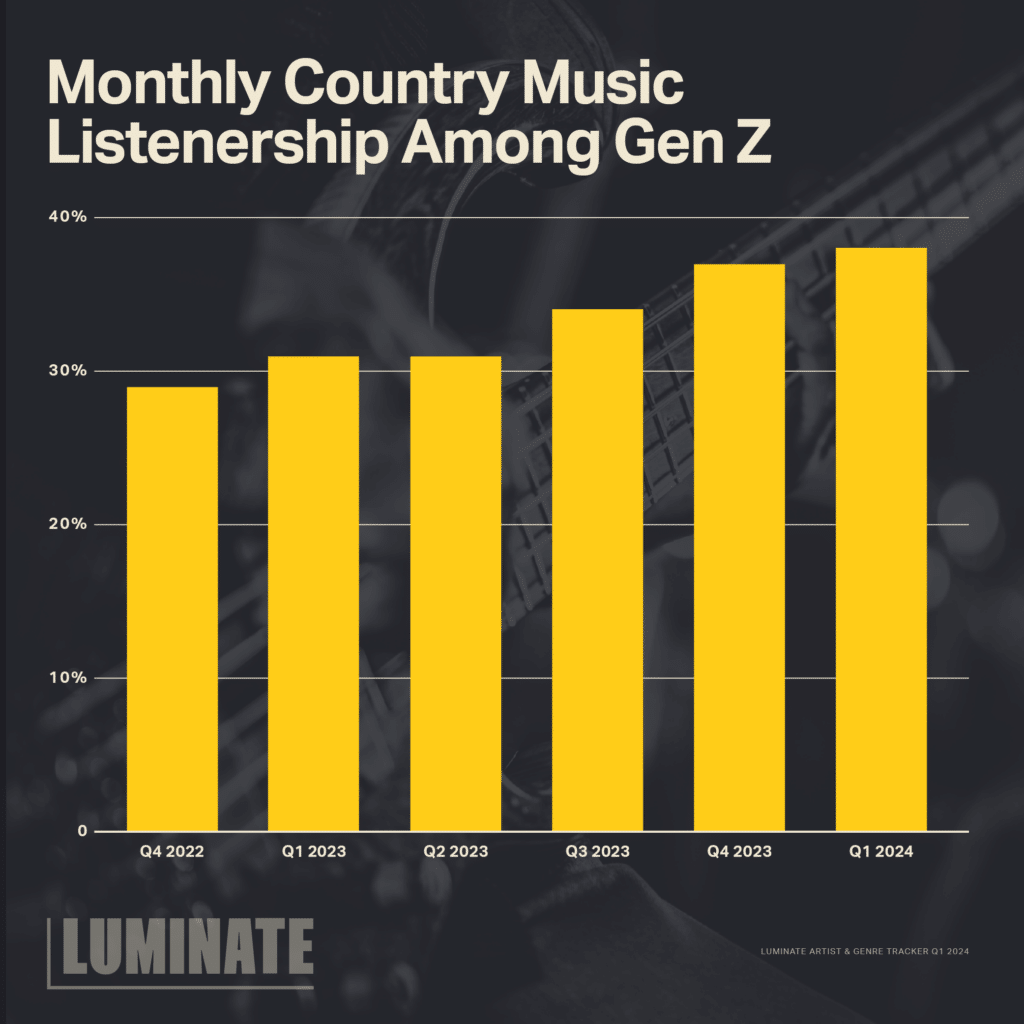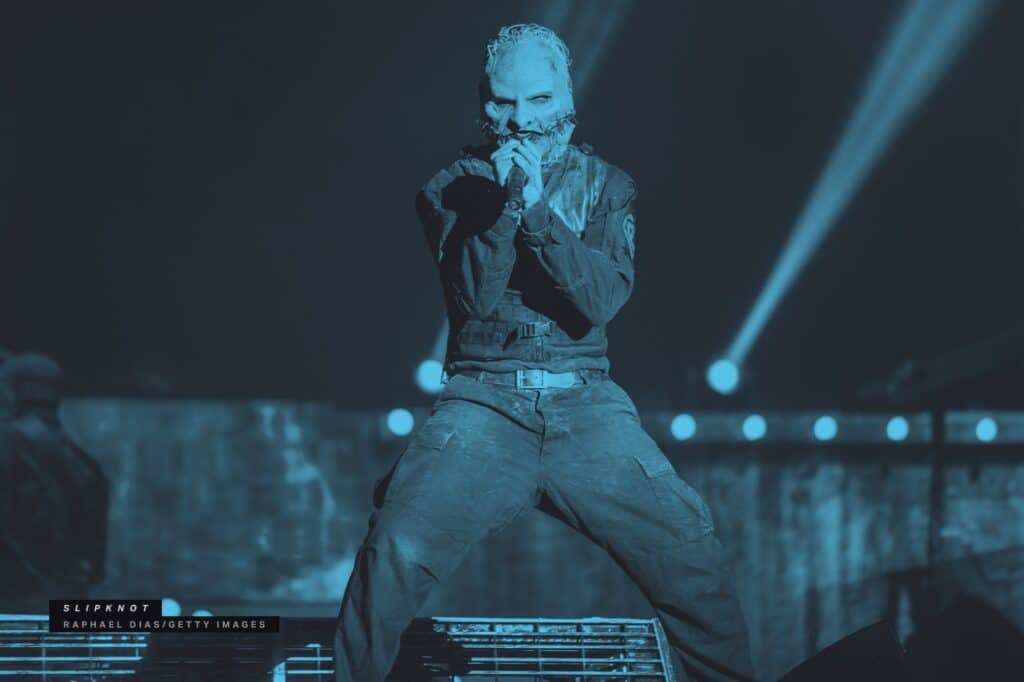The release of Lil Nas X’s “Old Town Road” in 2018 may have sown the seeds of a growing cultural exchange between Nashville and contemporary Hip-Hop, R&B and Pop. While some early tremors pointed to growing overlap between these two genres — Post Malone’s recent pivot to Country as well as the arrival of Jelly Roll’s unique Country/R&B/Hip-Hop fusion — two weeks ago we felt the first earthquake from these metaphorical tectonic plates.
This seismic event, of course, was the release of Beyoncé’s Cowboy Carter, which topped the Billboard 200 and acquired 281m U.S. On-Demand Audio (ODA) streams in the week of its release (week ending 4/4/2024), marking Beyoncé’s largest U.S. ODA streaming week in history. As the dust settles from this release, we wanted to peel back the layers to better understand what is driving this exchange between the broader music ecosystem and Country music.
To start, let’s look at the intersection of Hip-Hop and Country listenership using Luminate Insights consumer research data — both of which see comparably low levels of overlap with one another relative to other genre combinations¹.

Who is this share of listeners tuning in to both genres (shaded in green above)?
In many ways, these consumers behaviorally and demographically meet in the middle between Country listeners and Hip-Hop listeners. But there is one important preference that distinguishes this audience from Country music listeners overall:
Those who enjoy both genres are substantially more likely to listen to R&B music (at 64%, nearly twice the rate of monthly R&B listenership among music listeners overall).
See the expanded Venn Diagram below to illustrate where R&B sits in this genre mix:

In addition to R&B, we also find that Pop listenership is higher among listeners of “both” than it is among Hip-Hop or Country listeners in isolation.
Within this context, it’s easier to see how artists like Beyoncé, Jelly Roll and Post Malone can comfortably straddle the line between Country, R&B, Pop and Hip-Hop while still creating music that feels authentic to them and their increasingly-intersectional base of listeners.
And with Gen Z driving the growth in Country listenership, it’s likely that a larger number of non-Country acts will integrate Country elements into their music and that, inversely, Country acts will increasingly borrow creative elements from R&B/Hip-Hop/Pop acts as well.

Source:
¹ These data reflect responses collected in Luminate’s Artist & Genre Tracker (Q1 ’24). We’ll also note that the share of listeners who tune into “both” has incrementally grown in size over the course of 2023 and into 2024.
Luminate’s Artist & Genre Tracker
Luminate’s Music Consumption Data

